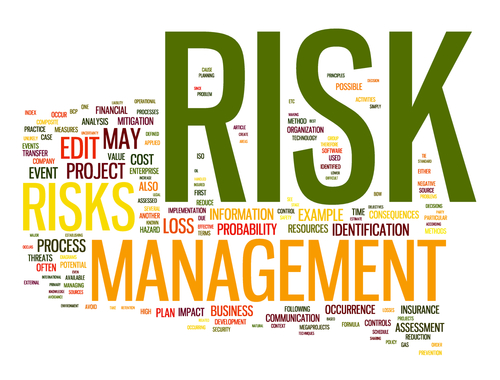(Randy Heffernan is the vice president of Palisade Corporation, a developer of risk and decision analysis software.)
Taken separately, most severe natural events are unlikely to occur. However, Mother Nature can take many forms, and her wrath is notoriously difficult to predict accurately, even with the best practices and software tools used by meteorologists. It is that unpredictability that makes such events so destructive.
But severe weather is only one part of the risk equation. All industries must manage weather risk on a day-to-day basis. Despite the severity of extreme events and the frequency of lesser events, risk analysis of weather is still rarely given the prominence it deserves. But it is crucial to determine what risks emerge when various types of weather conditions strike. Organizations should take a more strategic approach to this risk. Increasingly, companies are adopting more sophisticated techniques, using quantitative risk analysis, to specifically account for the inherent uncertainty and unpredictability that characterizes weather risk.
One example is the use of Monte Carlo simulations. Monte Carlo simulation is an analytical technique that evaluates and measures the risk associated with any given venture or project. It is a computerized mathematical process that defines uncertain variables in models and creates a range of possible outcomes and the probabilities that those outcomes may occur. Monte Carlo simulation can offer insight into the most risky and conservative outcomes for extreme risk situations.
Monte Carlo simulation in particular is being applied by a wide range of private companies and government agencies to formulate mitigation strategies. Just a few recent examples include:
- Flood planning. Britain’s Environment Agency commissioned the Halcrow Group Ltd., a global infrastructure firm, to develop a flood risk management plan to protect the more than five million people in England and Wales who live in areas susceptible to flooding. The company employs Monte Carlo simulation to account for the wide variability in the costs of flood defense projects and the likelihood of flood events occurring in different regions. With this insight, the group can allocate limited Agency funds most efficiently and to maximum benefit.
buy isotroin online desiredsmiles.com/wp-content/uploads/2023/10/isotroin.html no prescription pharmacy
- Hurricane response. In 2005, when Hurricane Katrina struck New Orleans, the Louisiana state government implemented a program that used Monte Carlo simulation to account for uncertain call volume to the response centers. This enabled the appropriate agencies to plan call staffing much more effectively, reuniting disconnected family members and freeing important resources to assist with other damage control efforts.
- Volcano mitigation planning. It may seem far-fetched, but volcanic eruptions are a significant threat to large populations in many parts of the world.
buy antabuse online desiredsmiles.com/wp-content/uploads/2023/10/antabuse.html no prescription pharmacy
Recently, researchers in Guatemala and at the UK’s University of Bristol examined the threat posed by Guatemala’s enormous Volcan de Fuego, one of the most dangerous in Latin America. Using Monte Carlo simulation and decision trees, another technique that maps out decisions in a sequential and probabilistic way, the teams were able to better understand the effects of evacuation times, communication delays, lava flow rates and other variables. As a result, researchers identified which factors were most important so that resources could be invested in the most effective mitigation strategies.
Given the public’s heightened awareness of weather risks, today’s risk managers and decision-makers have a useful, but potentially limited, window of opportunity to illustrate the benefits of quantitative risk analysis techniques to their organizations. By identifying potential risks, these tools can help protect the organization against unexpected costs in the future. Consider the following strategies to implement quantitative weather risk analysis:
- Supply evidence. Back up the commitment to a thorough quantitative risk management program with documentation on why it works. This validates the budget and buy-in requested at the start.
- Communicate clearly. As with any organizational change, it is essential that everyone is clear on the processes. Create a common risk language that everyone can understand to avoid misunderstanding and ensure a consistent approach to risk and decision analysis.
- Illustrate with numbers. Qualitative assessment is useful, but numbers are more powerful. For example, talking about the percentage chance of meeting a deadline or budget if certain weather conditions occur is much clearer than discussing how it “probably” will or won’t happen. This is critical for avoiding miscommunication regarding assumptions.
- Create the right organizational structure. Individuals and groups need clearly defined roles, and must take responsibility for their own area of expertise.
- Think laterally. No enterprise operates in isolation, so other external variables must be included in the decision-making model and process. For example, even a few inches of snow could have a major effect on revenues if raw materials need to be transported across long distances.
- View the complete picture. Weather risk factors can be explored by involving all stakeholders. Investing time and money in consultation and research ensures that businesses have a clear idea of the complete environment in which they operate, and therefore minimize the chances of products and services failing should a weather emergency occur.
- Report and review. Risks, and their management, must be reviewed regularly – and the program amended if necessary. Instigate a reporting process in which risks are clearly identified and prioritized.
- Learn new tricks. Being risk-aware does not mean being risk-averse. Businesses should be careful to avoid “the way we have always done it” approach. Keep up-to-date and be bold. Take into account previous miscues and successes when determining how weather events impact the organization.
Monte Carlo simulation, decision trees and other techniques, therefore, put risk managers in an ideal position to focus on potential weather risks and help make weather risk analysis an integral part of corporate operations.


